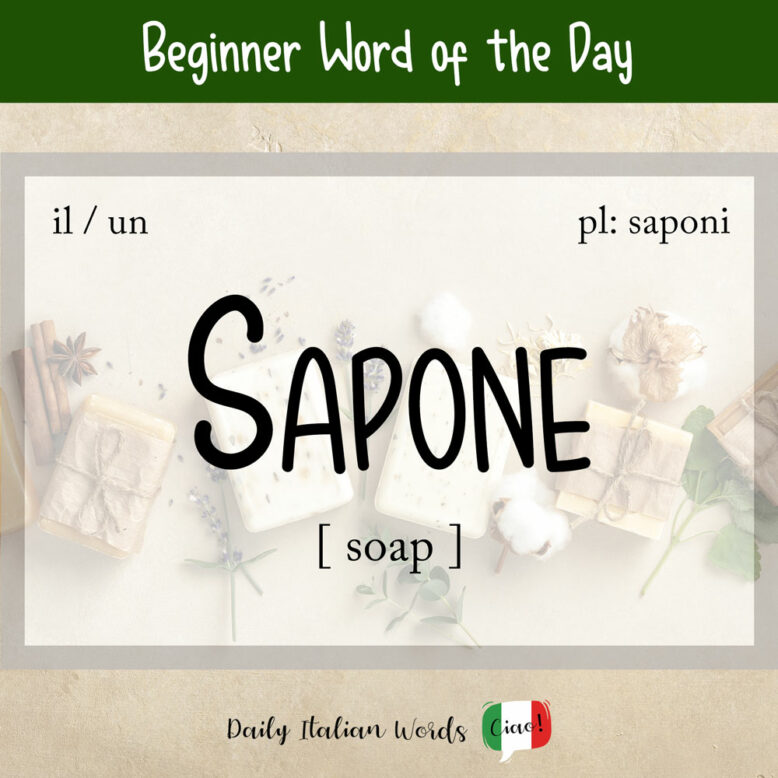Humans have used soap – or sapone (masculine, plural: saponi) in Italian – for washing, bathing and cleaning for millennia, with evidence of soap-like materials existing even in ancient Babylon.

Soap that is used for bathing or hand-washing generally comes in two forms: saponetta (bar soap) or sapone liquido (liquid soap).
Bisogna strofinare le mani con acqua e sapone per 30 secondi.
You have to scrub your hands with soap and water for 30 seconds.
The term acqua e sapone literally means water and soap but it can also be a figurative way of describing a girl or young woman with simple and reserved habits, expressed by a fresh and clean face without any trace of cosmetics.
Laura è una ragazza acqua e sapone.
Laura is pure and simple.
Some other terms related to soap include:
- bolla di sapone = soap bubble
- sapone neutro = mild soap
- sapone da barba = shaving soap
- schiuma (di sapone) = soapsuds
- docciaschiuma = shower gel, body wash
- sapone antibatterico = antibacterial soap
Once you’ve memorised the word for soap, it is also important to learn the verbs insaponare (to lather, to soap) and the reflexive insaponarsi (to lather oneself).
Il bambino prese la spugna e iniziò a insaponare la macchina.
The boy took the sponge and started soaping the car.
An interesting expression that has fallen out of use in recent years is dare del sapone a qualcuno (to give soap to someone) or more simply dar sapone (to give soap) which means to fawn over or flatter someone.
Heather Broster is a graduate with honours in linguistics from the University of Western Ontario. She is an aspiring polyglot, proficient in English and Italian, as well as Japanese, Welsh, and French to varying degrees of fluency. Originally from Toronto, Heather has resided in various countries, notably Italy for a period of six years. Her primary focus lies in the fields of language acquisition, education, and bilingual instruction.


